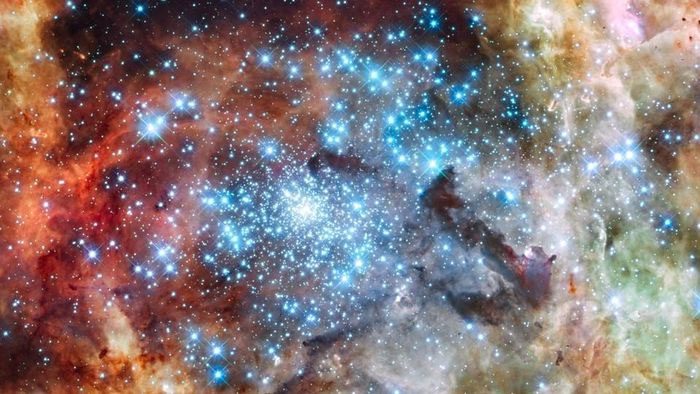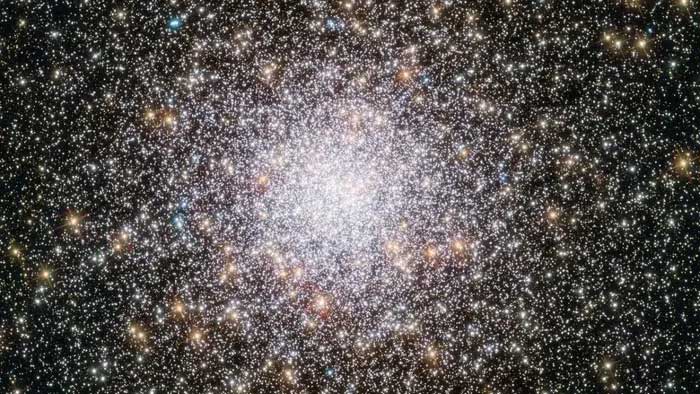The James Webb Space Telescope has discovered chemical traces of supermassive stars, 10,000 times the size of our Sun, that formed 440 million years after the Big Bang.
Born just 440 million years after the Big Bang, these colossal stars may be the source of heavy elements in the universe. The researchers behind the discovery refer to these stars as “cosmic monsters.” The findings were published in the journal Astronomy and Astrophysics.

The R136 star cluster in the center of the Tarantula Nebula. (Image: NASA, ESA, P. Crowther/ University of Sheffield).
“Thanks to the data collected by JWST, we believe we have found the first clues about the presence of these extraordinary stars,” said Corinne Charbonnel, an astronomer at the University of Geneva, the lead author of the study.
Charbonnel’s team detected chemical traces of the giant stars within globular clusters, groups of tens of thousands to millions of stars that are closely packed together. There are about 180 globular clusters scattered throughout the Milky Way. Many stars in these clusters are among the oldest in the universe, often considered by astronomers as “time windows” that help look back at the early stages of the universe.
The mystery is that the stars in these clusters have different ratios of oxygen, nitrogen, sodium, and aluminum, despite forming nearly simultaneously and from the same cloud of gas and dust 13.4 billion years ago.
Astronomers believe that the cause lies in the supermassive stars, the first gigantic stars formed under the dense conditions of the early universe. These stars may have burned through primordial elements at high temperatures, creating heavier elements that influenced the formation of smaller stars that came later.

Globular clusters contain hundreds of thousands to millions of stars, including some of the oldest stars in the universe. (Image: NASA Goddard).
However, finding these ancient giant stars is not easy. With sizes ranging from 5,000 to 10,000 times that of the Sun, they burn at temperatures of 75 million degrees Celsius. The larger and hotter the star, the faster it dies. Consequently, these “cosmic monsters” have long since perished in extremely violent explosions known as supernovae.
“Globular clusters are between 10 to 13 billion years old, while the maximum lifespan of giant stars is 2 million years. Thus, they disappear very early from currently observable clusters, leaving only indirect traces,” said Mark Gieles, an astrophysicist at the University of Barcelona.
To detect the giant stars through indirect traces, or chemical remnants, the researchers had the infrared camera of JWST observe the galaxy GN-z11. This is one of the oldest and most distant galaxies ever discovered, located 13.3 billion light-years from Earth.
Different chemicals absorb and emit light at different frequencies. By analyzing the light emitted from various globular clusters in GN-z11, astronomers detected high nitrogen levels, which is a sign of ancient massive stars.
“The clear presence of nitrogen can only be explained by the burning of hydrogen at extremely high temperatures, achievable only in the cores of massive stars,” Charbonnel stated.
From this first indication, the researchers plan to photograph more globular clusters in various galaxies to confirm and search for other signs left by giant stars.





















































